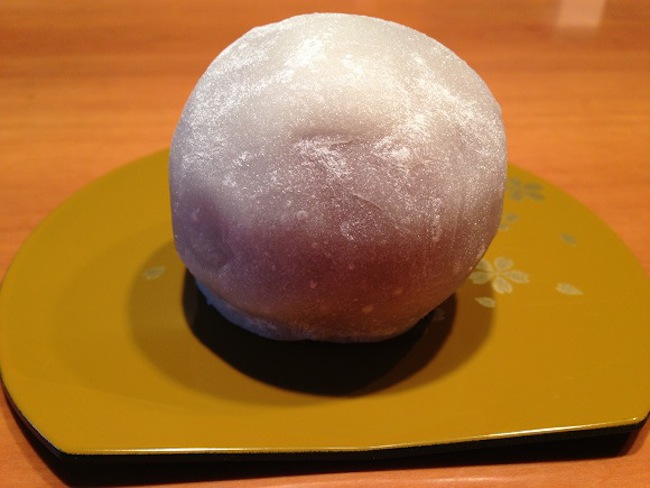
Eating sweet tangerines, or mikan as we call them here, while snuggled in a warm kotatsu table is a favorite winter pastime in Japan. (And believe us when we say it becomes a struggle to leave the comfortable warmth of the kotatsu for anything short of a grave emergency.)
Well, thanks to Japanese confection maker Akasaka Aono, you can now enjoy winter tangerines in a slightly unique form. They’ve wrapped a whole tangerine inside a soft daifuku rice cake! Now, that’s certainly an unusual presentation for a daifuku, so it’s not surprising that the Japanese public has taken notice, and since we’re always on the lookout for interesting foods, one of the reporters from our Japanese sister site Pouch promptly tried the cake to give all of us a first hand account. Let’s hear what she had to say about the unique tangerine and mochi confection!
Having a fruit inside a rice cake is actually not a new concept, since the strawberry daifuku, although a relatively recent confection, is now considered a common treat (and decidedly yummy in our opinion, with the slightly sour tang of the strawberry mixing extremely well with the sweet filling inside the cake, so kudos to whoever first came up with the idea).
The Akasaka Aono, the creators of the tangerine daifuku, is a maker of wagashi (traditional Japanese confections) with a long history dating back to 1899 and is known for catering to many high-end Japanese restaurants in the Akasaka area, where the shop is based.
▼Here’s the box the daifuku came in. The packaging seems to have an elegant quality, befitting a shop that serves confections to exclusive restaurants.
▼Each daifuku cake, covered with a sheet of delicately soft mochi on the outside, comes individually wrapped. Inside, still hidden from view is a whole tangerine and a red bean paste made using the highest quality red beans from Hokkaido.
▼Here’s the beautiful cake taken out of the package and onto a Japanese-style plate.
▼And this is what the rice cake looked like cut open. The shape of the whole tangerine and its brought orange color is quite stunning visually, isn’t it?
When our reporter took a bite of the cake, the juice from the tangerine filled her mouth, and she thought the combination of the incredibly soft mochi, the smooth bean paste and the sweet and plump tangerine tasted amazing all together!
She admits she was a bit skeptical about how the daifuku would taste at first, feeling that tangerine and red bean paste couldn’t mix that well, but once she actually ate the cake, she was surprised how tasty the combination was; she could tell the tangerine wasn’t used just for the visual impact but to create a genuine, quality dessert. In fact, she even went as far as to say that maybe, just maybe, tangerines may be a better fit with mochi and red bean paste than strawberries.
▼A surprisingly good match — tangerine, red bean paste and mochi!
According to our reporter, another factor that makes these daifuku appealing is that they could be considered relatively healthy, containing vitamins from the tangerine and being somewhat lower in calories compared to desserts high in butter and cream, while still being quite filling. With these cakes, maybe you can feel a little less guilty about snacking.
The tangerine rice cakes are available at Akasaka Aono’s Akasaka shop and Akasaka Mitsuke shop until early January for 270 yen (US$2.28), so you’ll want to hurry if you don’t want to miss this rare treat. The cakes look like they’ll make excellent gifts too, elegant yet with a touch of fun and surprise. Who knows, maybe they’ll become a standard winter dessert — we certainly wouldn’t complain about another delicious snack to enjoy under our kotatsu!
Reference: Akasaka Aono
Original article and photos by: Yuko Sawano © Pouch